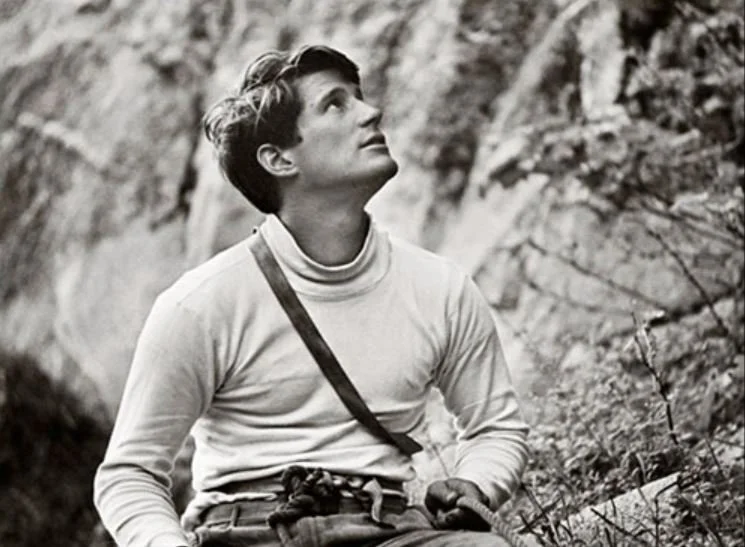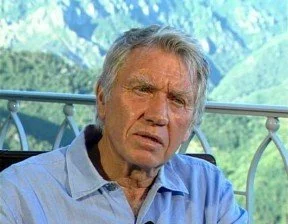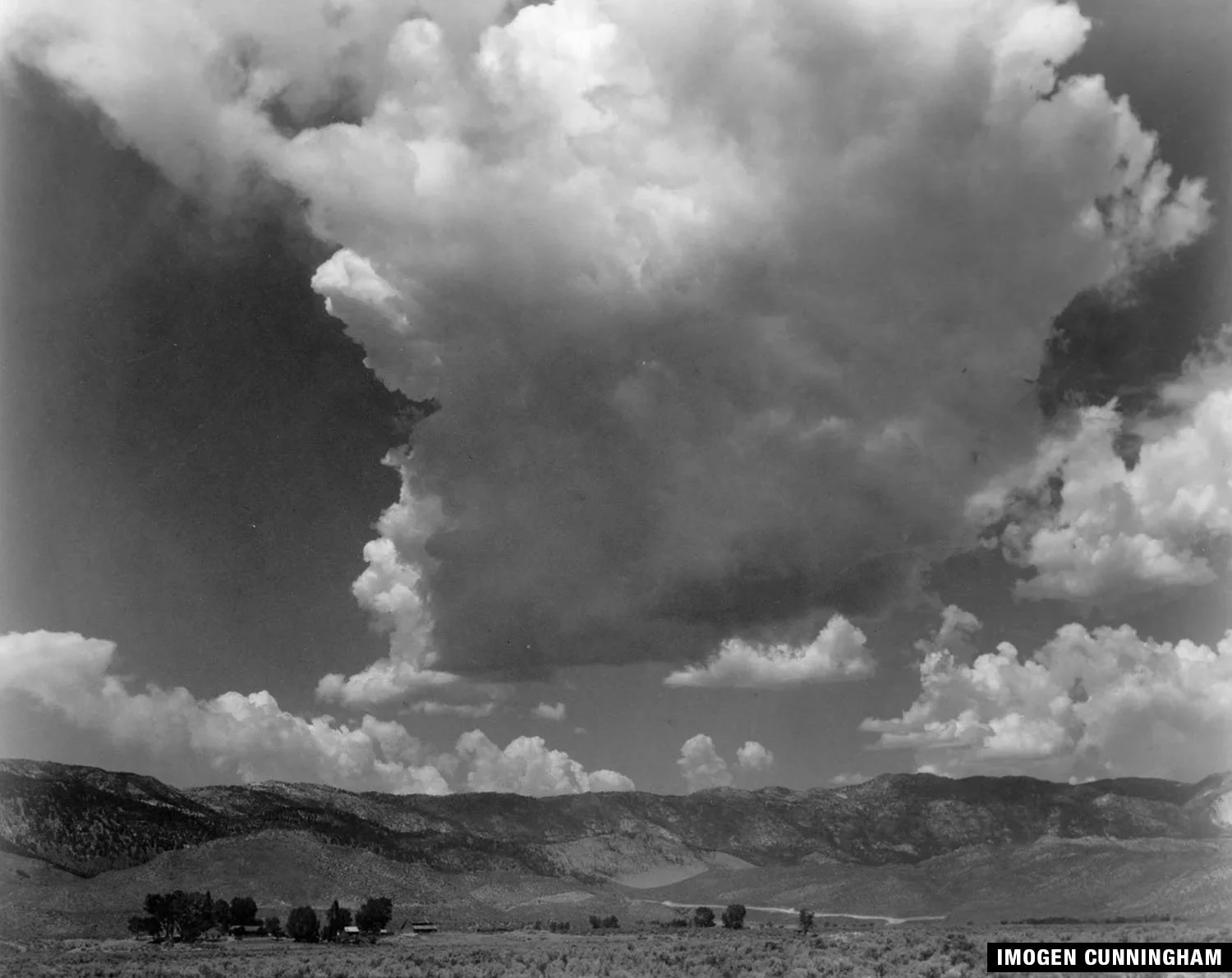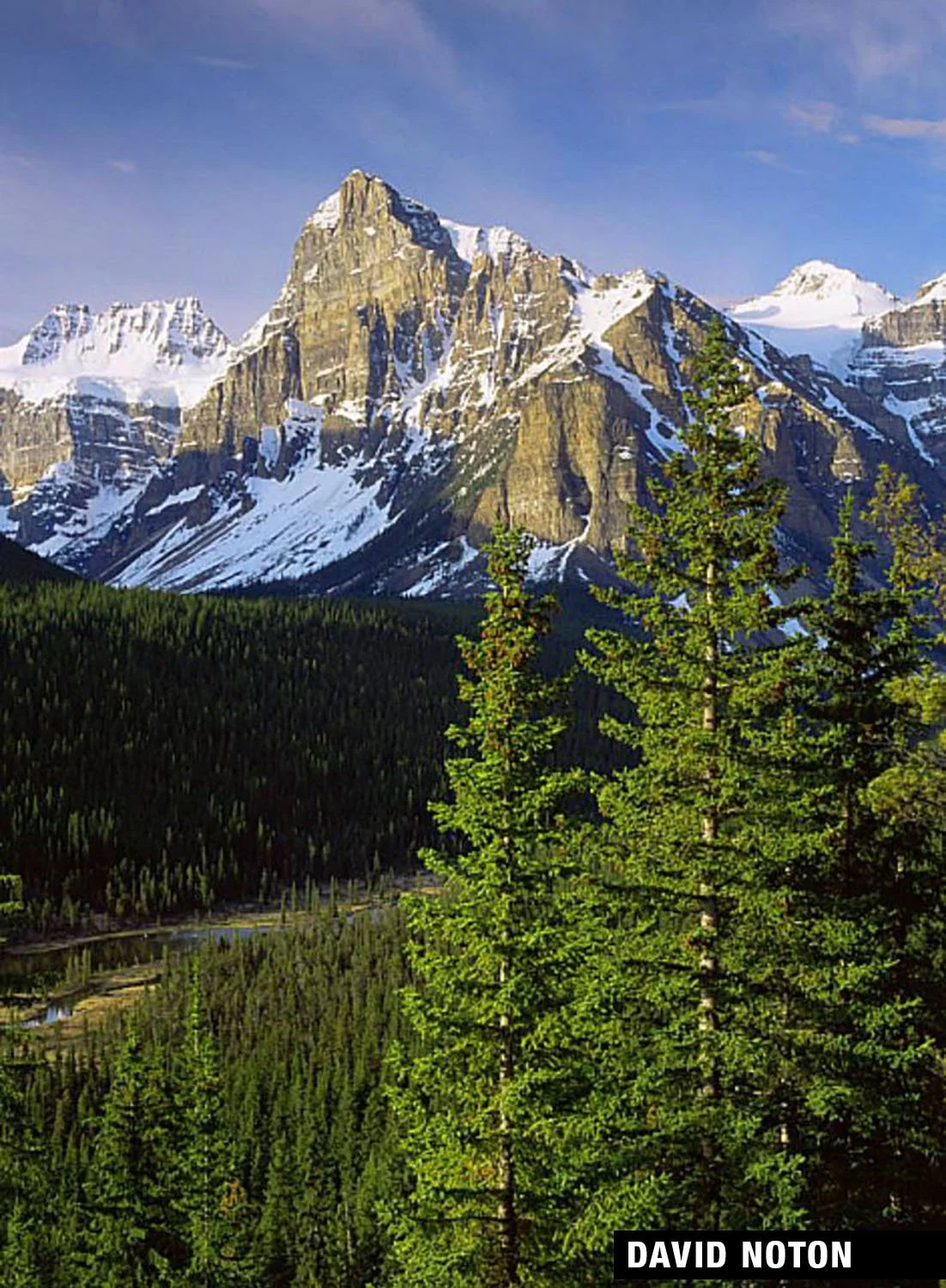Famous Landscape Photographers -10 that will get you inspired!
Landscape photography is a captivating art form that allows photographers to capture the beauty of the natural world. From majestic mountains and serene lakes to expansive deserts and lush forests, landscape photographers have the unique ability to transport viewers to stunning destinations through their lens.
In this blog, we'll explore the work of 10 famous landscape photographers who have made significant contributions to the field.
Ansel Adams
No discussion of legendary landscape photographers is complete without highlighting Ansel Adams, widely recognized as a pioneer of black-and-white landscape artistry. His magnificent images of the American West—especially his breathtaking photographs of Yosemite National Park—have profoundly shaped landscape photography and environmental advocacy.
Born in 1902 in San Francisco, Adams developed a deep bond with nature early on. He spent much of his youth exploring the rugged Sierra Nevada mountains, cultivating a lifelong reverence for wilderness. His passion for photography was sparked by a pivotal family trip to Yosemite in 1916, during which his parents gifted him his first camera, a Kodak No. 1 Box Brownie. As his skills matured, Adams graduated from this simple camera to the large format view camera, which allowed for much greater control, detail, and tonal range essential for his black-and-white work.
Adams was not only a master in capturing images but also in printing them. He co-developed the Zone System alongside Fred R. Archer—a revolutionary approach to precisely controlling exposure, development, and printing to realize his photographic vision. By pre-visualizing the final print, Adams carefully calibrated each shot’s exposure and development to place different tonal values within specific “zones” from pure black to pure white, optimizing the film’s dynamic range. His printing process incorporated meticulous dodging and burning techniques to enhance details and contrasts in shadows and highlights, often using high-quality fibre-based papers and toning methods, such as selenium toning, to enrich the depth and longevity of his prints.
Most Famous Work: “Moonrise, Hernandez, New Mexico" – Ansel Adams captured this iconic image in 1941, showcasing the moon rising over the small village of Hernandez, creating a stunning contrast between light and shadow.
© Ansel Adams - "Moonrise, Hernandez, New Mexico"
Impact on Photography
Ansel Adams' impact on photography is not only seen in his stunning images but also in the way he transformed photography into a medium of artistic expression and a tool for environmental activism. His techniques, philosophies, and environmental advocacy remain influential to this day, cementing his status as one of the most important photographers in history.
In honour of his contributions to conservation, the Ansel Adams Wilderness in California's Sierra Nevada was named after him, preserving a vast expanse of pristine wilderness for future generations. This highlights Ansel Adams's enduring legacy as a photographer, environmentalist, and advocate for the preservation of America's natural landscapes.
Ansel Adams passed away on April 22, 1984, but his legacy endures—through each carefully crafted image, he continues to inspire generations of photographers, reminding us of the profound beauty and power of the natural world.
Ansel Adams, Yosemite Valley, Thunderstorm
Inspirational quote
“You don’t make a photograph just with a camera. You bring to the act of photography all the pictures you have seen, the books you have read, the music you have heard, the people you have loved.”
Galen Rowell
Galen Rowell's journey into landscape photography was shaped by his lifelong passion for the outdoors and adventurous spirit. Born on August 23, 1940, in Oakland, California, Rowell developed an early fascination with nature and exploration. He spent much of his youth hiking, climbing, and exploring the Sierra Nevada mountains near his home.
Rowell's interest in photography began during his college years at the University of California, Berkeley, where he studied physics and became involved in the Sierra Club, a conservation organization dedicated to protecting wilderness areas. Inspired by the stunning landscapes he encountered during his outdoor adventures, Rowell sought to capture the beauty of these places through photography.
Throughout his career, Rowell continued to push the boundaries of landscape photography, pioneering new techniques and approaches to capturing the natural world. He became known for his ability to capture fleeting moments of light and atmosphere, creating images that evoked a sense of wonder and awe.
Most Famous Work: “Rainbow over the Potala Palace" – Galen Rowell's photograph of a rainbow stretching over Tibet's Potala Palace is celebrated for its vibrant colours and the harmonious blend of nature and architecture.
© Galen Rowell - “Rainbow over the Potala Palace"
Impact on Photography
Galen Rowell's impact on photography lies in his ability to connect deeply with the natural world and capture it in a way that is both artistically compelling and emotionally resonant. He transformed outdoor photography by making it more personal, dynamic, and adventurous, leaving a lasting legacy that continues to inspire photographers and adventurers alike.
He also won the Ansel Adams Award for Conservation Photography showing Rowell's enduring legacy as a pioneering adventure photographer and conservationist.
Dorothea Lange, White Angel Breadline, 1933
Inspirational quote
“The landscape is like being there with a powerful personality and I'm searching for just the right angles to make that portrait come across as meaningfully as possible.”
Get access to ALL our online courses - 1000’s of videos, worksheets, critiques of students work, personalised support and much more with our monthly membership.
Art Wolfe
Art Wolfe's journey into landscape photography was shaped by his innate curiosity, love for the natural world, and early exposure to different cultures. Born on September 13, 1951, in Seattle, Washington, Wolfe grew up surrounded by the diverse landscapes of the Pacific Northwest, which instilled in him a deep appreciation for nature's beauty.
Wolfe's interest in photography was sparked during his teenage years when he received a camera as a gift from his father. He began taking pictures of the landscapes and wildlife around him, experimenting with composition and lighting to capture the essence of the natural world.
After studying art and photography in college, Wolfe embarked on a journey of exploration and self-discovery, traveling extensively throughout the United States and abroad. His travels exposed him to a wide range of landscapes, from the rugged coastlines of the Pacific Northwest to the sweeping deserts of the American Southwest.
Most Famous Work: "Earth Is My Witness" – Art Wolfe's expansive collection and the accompanying book, "Earth Is My Witness", showcase his diverse body of work, offering a comprehensive view of the world's landscapes and cultures.
© Art Wolfe - Image from Wolfe’s “Earth is my witness” collection
Impact on Photography
Wolfe blends elements of fine art, wildlife, and cultural photography, creating images that transcend traditional nature photography. Wolfe’s impact on photography is defined by his ability to merge art and nature, turning his lens on the beauty, complexity, and fragility of the natural world. His work not only captures stunning images but also tells powerful stories that inspire conservation and a deeper connection with the planet, influencing both photographers and nature lovers alike.
His work continues to inspire photographers and nature enthusiasts around the world, encouraging them to appreciate and protect the beauty of our planet's landscapes and wildlife.
Art Wolfe - Seven Colour Mountain, Bolivia
Inspirational quote
“Never stop looking, no matter where you are, everywhere there are good photographs.”
Don McCullin
Don McCullin is renowned primarily for his powerful documentary photography capturing the harsh realities of conflict and human suffering. While he is not typically considered a landscape photographer in the traditional sense, McCullin's work often incorporates landscapes as a crucial backdrop to his narratives, showcasing the impact of war and social injustice on the environment.
Don McCullin, born on October 9, 1935, in London, England, initially gained recognition as a photojournalist documenting conflicts around the world. His early experiences as a photographer took him to some of the most war-torn regions of the 20th century, including Vietnam, Cambodia, Northern Ireland, and the Middle East.
While McCullin is best known for his harrowing and emotionally provocative images, the landscapes he included played a significant role in contextualizing the stories he tells. In many of his photographs, landscapes serve as silent witnesses to the devastation wrought by conflict, offering a stark contrast between the tranquillity of nature and the chaos of war.
McCullin's landscapes are characterised by their rawness and authenticity, reflecting the scars left behind by conflict and human suffering. His compositions of desolate landscapes, crumbling buildings, and ravaged countryside, serve as poignant reminder that war takes on both communities and the environment.
Most Famous Work: Most of Don McCullin’s most famous work was through his documentary photographs, however he released a book titled, ‘The Landscape’, which depicted some of his finest landscape photographs.
© Don McCullin - Image from ‘The landscape’.
Cover of McCullin’s book "The Landscape”.
Impact on photography
Don McCullin’s impact on photography is both profound and far-reaching, redefining the role of the photojournalist and the power of the photographic image. Renowned for his unflinching coverage of war, conflict, and social hardship—from Vietnam and Northern Ireland to the urban poverty of 1960s London—McCullin’s images are instilled with deep empathy, humanity, and a haunting sense of dignity. He brought the world’s tragedies into public view, often at great personal risk, compelling audiences to confront suffering and injustice that might otherwise be overlooked.
McCullin’s commitment to "bearing witness" elevated photography beyond mere aesthetics, insisting that the camera could and should function as a tool for social conscience, protest, and remembrance.
Importantly, McCullin’s work resisted desensitisation; his images continue to evoke both shock and compassion, pushing viewers to reflect on the realities of war and poverty without sensationalising or dehumanising his subjects. As a result, his legacy extends beyond iconic images to a generation of photographers and journalists inspired by his ethical commitment and his belief that photography can—and must—change how we see and remember the world
Don McCullin - Image from ‘The Landscape’
Inspirational quote
“Photography for me is not looking, it’s feeling. If you can’t feel what you’re looking at, then you’re never going to get others to feel anything when they look at your pictures.”
Michael Kenna
Michael Kenna's journey into landscape photography was shaped by his fascination with the natural world and his desire to capture its serene beauty through the lens of his camera. Born in 1953 in Widnes, England, Kenna grew up surrounded by the industrial landscapes of northwest England, which would later influence his artistic vision.
After studying photography at the Banbury School of Art and the London College of Printing, Kenna travelled extensively throughout Europe and Asia. His travels took him to remote and often overlooked landscapes, where he found inspiration in the quiet beauty of nature.
Kenna's minimalist approach to landscape photography, characterised by his use of long exposures and black-and-white film, has earned him a dedicated following and widespread recognition as one of the preeminent landscape photographers of his generation. His images invite viewers to slow down and appreciate the subtle beauty of the natural world, reminding us of the importance of preserving and cherishing our planet's landscapes for future generations to enjoy.
Most Famous Work: "Bamboo and Ginko Leaves, Study 2, Hokkaido, Japan" – Michael Kenna's minimalist composition and use of long exposure techniques create a serene and poetic portrayal of the Japanese landscape.
© Michael Kenna - Image from Bamboo and Ginko Leaves, Study 2, Hokkaido, Japan"
Impact on photography
Michael Kenna has left a lasting mark on contemporary landscape photography through his distinctive minimalist style, poetic vision, and meditative approach to image-making. Kenna strips landscapes down to their essential forms, emphasising mood, atmosphere, and the passage of time over dramatic spectacle. His ability to evoke profound emotion through simplicity has redefined how many photographers approach the natural world.
Kenna’s work stands as a masterclass in restraint and subtlety, proving that power in photography often lies not in complexity, but in quiet clarity.
Today, Kenna’s contemplative images continue to inspire both seasoned photographers and emerging artists alike, solidifying his place among the most respected and influential landscape photographers of the modern era.
Michael Kenna, Yedang Reservoir Tree, Chungcheongnam-do, South Korea
Inspirational quote
“As a landscape photographer we should be open to possibilities, for one thing often leads to another.”
Jack Lodge
Jack Lodge is a professional landscape and nature photographer based in Wimborne, Dorset, UK. Renowned for his evocative images of the British countryside, Jack has garnered a significant following for his ability to capture the changing seasons and the interplay of light and landscape.
Jack's journey into photography began during his studies in architecture at Arts University Bournemouth. In 2014, while attending the Venice Biennale, he purchased his first camera to document architectural scenes. This experience ignited his passion for photography, leading him to explore landscape photography more deeply. After graduating with a BA (Hons) in Architecture, Jack initially worked in an architectural practice but eventually transitioned to photography full-time in August 2022, turning his hobby into a thriving business.
Lodge is dedicated to capturing the essence of each season, from misty bluebell woods to dramatic coastal scenes along Dorset's Jurassic Coast. His commitment to authenticity and patience is evident in his pursuit of rare natural phenomena. For instance, he spent four years attempting to photograph the "Sunstar" effect at Durdle Door, a moment when the sun aligns perfectly through the arch—a feat he finally achieved, earning widespread acclaim. Jack is also one pro photographers for our Forest Photography Course.
Most Famous Work: : Jack Lodge's most famous image to date is the “Sunstar at Durdle Door” photograph.
© Jack Lodge - “Sunstar at Durdle Door”
Impact on photography
Jack Lodge's impact on landscape photography has been both regional and increasingly global, thanks to his distinctive approach, commitment to authenticity, and ability to merge artistry with education. Jack Lodge has become a modern ambassador for thoughtful, meaningful landscape photography—not through gimmicks or shortcuts, but through dedication, deep connection to place, and a desire to help others grow through the same lens.
Jack Lodge, Rainbow
Inspirational quote
"That's the beauty of landscape photography; it keeps bringing you back for more as no two outings are ever the same."
Imogen Cunningham
Imogen Cunningham, a pioneering American photographer known for her contributions to modernist photography, primarily focused on botanical studies, portraiture, and the nude. While she is not typically associated with landscape photography, she did capture some landscapes throughout her career, especially early on.
Cunningham's formal training in photography began when she enrolled in the University of Washington in Seattle in 1903, where she studied chemistry and art. It was during this time that she developed her technical skills and artistic vision, exploring various genres of photography, including landscape.
While Cunningham's early work primarily focused on botanical studies and pictorialism, she occasionally ventured into landscape photography, capturing scenes from the natural world around her. These early landscape photographs showcased her keen eye for composition and her ability to capture the beauty of the world around her.
Most Famous Work: One of her notable landscape photographs is "Clouds" (circa 1932), a striking image, showcasing her skill in composing natural landscapes. While perhaps not as widely recognized as her portraits or botanical studies, "Clouds" exemplifies Cunningham's ability to capture the beauty and grandeur of the natural world.
© Imogen Cunningham - "Clouds"
Impact on photography
Imogen Cunningham’s impact on photography is defined by her pioneering modernist vision, technical innovation, and lasting advocacy for women in the arts. Cunningham helped to redefine photography as a fine art—moving beyond the painterly softness of pictorialism to champion clarity, abstract composition, and the power of everyday subjects.
Her relentless experimentation, from double exposures to inventive still lifes, expanded the creative possibilities of photography and inspired generations to explore both the technical and emotional depths of image-making. Through her artistry and advocacy, Cunningham not only influenced the direction of modern photography but also opened doors for women, leaving a legacy celebrated for its enduring beauty, innovation, and impact across photographic history.
Imogen Cunningham, On Mount Rainier
Inspirational quote
“Which of my photographs is my favourite? The one I’m going to take tomorrow.”
David Noton
Born in Bedfordshire, Noton started exploring the world at a very young age, moving to the US while his father worked on the American space programme.
After setting up his photography business in Bristol in 1985 he travelled extensively throughout the United Kingdom and Europe, capturing the diverse landscapes and cultures he encountered along the way.
Over the years, Noton's photography has taken him to some of the world's most iconic landscapes, from the rugged coastlines of Scotland to the majestic peaks of the Himalayas. He has developed a distinctive style characterised by his meticulous attention to detail and his ability to convey the sense of awe and wonder inspired by the landscapes he photographs.
Most Famous Work: One of Noton's iconic images is "Valley of the Ten Peaks," captured in Banff National Park, Canada. This breathtaking photograph showcases the rugged beauty of the Canadian Rockies, with the towering peaks reflected in the tranquil waters below. The image perfectly encapsulates Noton's skill in capturing the grandeur and majesty of the natural world, earning widespread acclaim among landscape photography enthusiasts.
© David Noton - Valley of the Ten Peaks
Impact on photography
Encompassing his technical mastery, educational outreach, environmental advocacy, and active engagement with the photographic community, his impact on contemporary photography is both wide-ranging and deeply felt. Through his ability to capture and convey the beauty, atmosphere, and emotion of landscapes and travel experiences, he has not only defined a distinctive visual style but also inspired countless photographers around the world. His work continues to influence peers and emerging talents alike, encouraging a thoughtful, immersive approach to both photography and the natural world.
David Noton, Beech tree – Dorset by David Noton
Inspirational quote
"The endless subtleties of natural light provide me with endless inspiration."
Charlie Waite
Charlie Waite's journey into landscape photography began as a natural extension of his love for the outdoors and a desire to capture the beauty of the natural world. Born in England, Waite spent much of his childhood exploring the countryside, developing a deep appreciation for the landscapes that surrounded him.
In the early years of his career, Waite balanced his passion for photography with various jobs to support himself financially. However, his love for landscape photography continued to grow, and he soon made the decision to pursue it full-time.
Waite's breakthrough came when he co-founded the landscape photography agency "Light & Land" in 1989. Through Light & Land, Waite was able to share his expertise and passion for landscape photography with others through workshops, tours, and exhibitions.
Most Famous Work: One of Waites best pieces of work was “Trees” – His evocative photographs of enchanting trees and their landscapes, exemplifies his ability to capture the mood and essence of a pure landscape.
© Charlie Waite “Trees”
Impact on photography
Charlie Waite’s impact on landscape photography is defined by his distinctive “painterly” style, technical mastery, and lifelong commitment to sharing the beauty of the natural world. Renowned for his serene and carefully composed images—often featuring nuanced use of light and shade—Waite has elevated British landscapes onto the international stage, shaping the visual language of contemporary landscape photography.
A passionate educator and advocate, he has authored over 30 books, held numerous solo exhibitions worldwide, and lectured extensively, inspiring photographers at all levels to develop their craft. Through founding the UK Landscape Photographer of the Year competition Waite has fostered a vibrant community and encouraged a wider appreciation of landscape photography’s artistry and emotional power.
His enduring influence reaches both established and emerging photographers, making him a pivotal figure whose legacy extends from the gallery walls to the broader public’s understanding of the landscape as an expressive art form.
Charlie Waite, VALENSOLE II, FRANCE
Inspirational quote
“A landscape image cuts across all political and national boundaries; it transcends the constraints of language and culture.”
Andreas Gursky
Andreas Gursky is a renowned German photographer known for his large-scale, digitally manipulated images that often depict landscapes, architecture, and contemporary life. However, it's important to note that while Gursky's works may feature landscapes, they are not strictly categorized as landscape photography in the traditional sense. Instead, his photographs explore themes of globalization, urbanization, and the relationship between humanity and the built environment.
Gursky began his career by photographing landscapes and urban scenes, often using a large-format camera to capture intricate details and expansive vistas. However, it was his experimentation with digital manipulation and his use of technology to transform and enhance his images that set him apart as a ground-breaking artist.
Throughout his career, Gursky has pushed the boundaries of photography, employing digital editing techniques to create visually stunning and conceptually rich compositions. His photographs often depict vast, immersive landscapes that convey a sense of awe and disorientation, inviting viewers to reconsider their perceptions of space, time, and scale.
Most Famous Work: Andreas Gursky's most famous work is arguably "Rhein II," a photograph captured in 1999 depicting a view of the Rhine River in Germany. "Rhein II" is renowned for its minimalist composition and monumental scale, measuring approximately 6 feet by 11 feet when printed.
© Andreas Gursky "Rhein II”
Impact on photography
Andreas Gursky stands as one of the most influential contemporary photographers. His distinctive style blends meticulous attention to detail, bold use of colour, and elevated perspectives to illuminate the vast systems and intricate structures of globalisation, consumerism, and urban life. Leveraging digital manipulation and compositing techniques, Gursky constructs hyperreal scenes—often built from multiple photographs—that reveal patterns and complexities imperceptible in everyday experience.
Gursky’s photographs, such as "Rhine II" and "99 Cent II," have become icons of contemporary visual culture. His immersive, wall-sized prints demand the viewer’s attention and have elevated photography’s status within the fine art world, inspiring new generations of artists to explore scale, technology, and abstraction.
By continually pushing the possibilities of what a photograph can be and how it can be experienced, Gursky has redefined the relationship between image, viewer, and the realities of a globalized society, securing his place at the forefront of contemporary visual art.
Andreas Gursky, SALERNO
Inspirational quote
“I believe that photography has the potential to reveal the hidden aspects of our world, to make the invisible visible.”
Conclusion
These 10 famous landscape photographers represent a diverse range of styles, perspectives, and approaches to capturing the beauty of our world. Whether you're an aspiring photographer or simply an admirer of stunning landscapes, exploring the works of these artists can provide inspiration and appreciation for the wonders of nature.
From our Pro Landscape course with Tom Archer
Check out our Pro Landscape course here.
Check out these tutorials below
I hope you liked this blog on the famous landscape photographers of our time. If you did, please leave us a comment and support us by sharing it with your friends and subscribe to our newsletter at the bottom of this page for more.
We also have an excellent learning community on social media so please join us there as well.
Thanks for reading and remember – Learn more at The School of Photography.




































